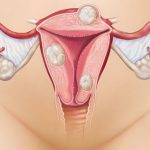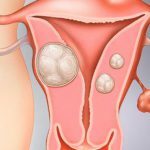Myoma of the uterus is one of the most common tumors of the reproductive system in women. Despite the fact that it is extremely rarely malignant, the knots deliver a lot of inconveniences: profuse menstruation, abdominal pain, problems with bearing and pregnancy, etc. In most cases, conservative therapy schemes are ineffective in fibromatosis, they can only temporarily eliminate some of the symptoms. FUS-ablation of fibroids is a relatively new method in the treatment of this pathology. Are there any advantages to the operation and how effective is it?
FUS ablation of fibroids- What is this procedure?
FUS-ablation of fibroids - focused ultrasound coagulation of nodes. The essence of the method can be represented by the following steps:
- Under the control of MRI( magnetic resonance imaging), the location of the nodes is specified as precisely as possible.
- The ultrasound beam is focused on the tumor, which leads to the heating of the focus and its coagulation.
- A screening examination is performed with the help of MRI, according to which the doctors judge the effectiveness of the treatment.
Initially, FUS ablation was proposed for the treatment of certain malignant neoplasms of the liver and other distant organs. Later it was used to treat uterine fibroids.
 We recommend reading the article about multinodular myoma of the uterus. From it you will learn about the causes of the appearance of pathology, symptoms and signs, as well as the methods of treatment of myoma.
We recommend reading the article about multinodular myoma of the uterus. From it you will learn about the causes of the appearance of pathology, symptoms and signs, as well as the methods of treatment of myoma.
And here more about the symptoms of uterine fibroids with menopause.
Contraindications to AFD ablation
Numerous studies have shown the effectiveness of the procedure, but only if all the indications for such treatment are carefully weighed. If they are not followed, the risk of complications and relapses of myoma increases dramatically.

The main contraindications for this type of treatment are:
- If a woman has a pronounced excess body weight( more than 110 kg or waist circumference above 110 cm with less weight).This limitation is due to the capabilities of the MRI camera.
- If a woman has symptoms of claustrophobia. The fact is that the MRI chamber is a closed space in which it will be necessary to stay about 3 to 4 hours.
- In the case when a woman has an artificial pacemaker or any metal structures in the body. It is also impossible to carry out an MRI, since it is performed under conditions of a strong magnetic field.
- If a woman has severe and decompensated somatic diseases, the question of the advisability of such treatment is carried out on an individual basis.
Rules for successful FUS ablation with MRI
Not all uterine fibroids undergo similar coagulation. Only careful selection allows you to make the procedure the most effective and reduce the risk of relapse of pathology. Therefore, in order for the manipulation to be successful, the following conditions must be observed:
- If previously performed some operations on the pelvic organs and the abdominal cavity, the ablation of abnormalities is dangerous. This is due to the fact that it is never possible to predict the course and amount of adhesions in a small pelvis, but, accidental exposure to ultrasound rays on them can lead to serious burns.
- It is also necessary to carefully weigh all the pros and cons for multiple fibroids, when five or more nodes are to be removed.
- FUS ablation is available only for nodes with a subserous-intramural growth located not deeper than 12 cm from the front surface of the body and no further than 4 cm from the sacrum. Thus, this method can not remove those fibroids that lie deep in the muscles of the uterus, as well as located on the stalk. It is also technically impossible and dangerous to ablate nodes located close to the sacrum, since the probability of damaging the nerve plexuses is high.
- If the total volume of myomatous nodes is more than 500 cm3, you should also refrain from such an operation, since the probability of incomplete removal of myomas is high.
- Ablation is not performed if uterine arteries have been previously embolized.
- It remains questionable whether it is possible to perform a similar operation for women planning a pregnancy. Some researchers give data on successful gestation after such interventions. But the majority is of the opinion that in such situations it is better to give preference to classical methods.
- During pregnancy, the performance of FUS ablation is strictly prohibited.
Look at the video about the treatment of fibroids by the method of FUS ablation:
Advantages of the procedure for myoma
FUS ablation has significant advantages over classical( including laparoscopic) surgical treatment. Therefore, if possible, this method is suggested to the woman. The main advantages are the following:
- This is an organ-saving operation. It is important for those who remove fibroids for the purpose of planning pregnancy( although the correctness of this approach has conflicting opinions).And in general, there are no "superfluous elements" in the body of the woman, therefore, with miomy, organ should be preserved as much as possible, especially in young girls.
- There is no need for anesthesia to perform FUS ablation. The procedure is not accompanied by significant unpleasant sensations.
- During such an operation there is no blood loss, scarring on the skin.
- Recovery after PSA ablation takes only a few days, after which a woman can return to a normal lifestyle with little restrictions for a while. Sometimes it is performed in general outpatient.
- The method allows to remove sufficiently large fibroids with minimal risk of relapse.
Examinations before the ablation of
The procedure requires thorough examination, despite all the apparent simplicity and safety of the operation. The usual list includes the following tests and specialists:
- General clinical examination( blood and urine tests, coagulogram, HIV, syphilis, hepatitis, etc.).
- Detailed gynecological examination, which includes the WFD( separate diagnostic curettage of the uterine cavity and cervical canal), if necessary - biopsy, hysteroscopy. Ultrasonic examination of pelvic organs, preliminary MRT is also performed.
- Survey of the therapist, and in the presence of concomitant somatic pathology - specialized specialists.
- Radiographic examination of the lungs and electrocardiogram.
- Oncomarkers: CA-125, HE4.
If necessary, the scope of the survey is enlarged.
Technique for getting rid of uterine fibroids
The entire procedure of FUS ablation takes at least 3 to 6 hours. At this time, the woman is in the MP-camera in the supine position. There is a nurse nearby for the entire session to monitor the patient's condition. The sequence of carrying out the PSA ablation is as follows:
- The woman undergoes a bladder catheterization. It is done to simplify the process, if during the procedure it will be necessary to fill it up or completely devastate.
- The patient is then placed in a horizontal position on the abdomen. In the future, it is forbidden to move a part of the body below the waist. With your hands, you can move your head without limits.
- A woman is given an alarm button, which she should press only in emergency situations( if it becomes bad, it hurts, etc.).
- A preliminary scan of the pelvic organs of the patient is carried out, after which the projections and directions of exposure are selected.
- The doctor then focuses the ultrasound rays on the necessary area, heating it up as much as possible. There is a coagulation of the node - about 20 seconds per site. Then, before a minute of time is given to cool this zone. In parallel with this, MR-scans can be carried out to control the process.
- After completion of the procedure, the last step is the examination of the area of exposure with intravenously injected contrast. If the doctor considers the operation successful, it ends here, and the woman is transferred to the ward for at least 2 hours for observation.
What should I immediately tell the doctor during FUS-MRI
As a rule, the procedure of FUS ablation does not bring any special unpleasant sensations. A woman can note the following in norm:
- feeling of slight burning, warmth in the lower abdomen and on the skin;
- slight pulling pain, similar to menstrual.
Rarely, but complications may occur during FUS ablation. Therefore, it is necessary to notify the doctor immediately if the following occurs:
- severe soreness, burning or other unpleasant sensations in the area of exposure;
- stitching or shooting pain in the sacrum, waist or leg.
Possible complications and peculiarities of the organism's behavior after
If there are strong unpleasant sensations, it is most likely that complications develop. The main undesirable consequences can be attributed to the following:
- If the area of influence is incorrectly chosen or there is an adhesive process in the small pelvis, a burn of tissues may develop. Treatment depends on the degree of damage.
- If subjected to similar treatment sites located close to the sacrum, there is a possibility of trauma to the sciatic nerve. And this is fraught with multiple problems( including persistent severe pains) in the future.
- If the myomatous node is not completely removed, it will soon grow again. As a result, FUS ablation will be inefficient and non-radical operation.

Re-examination of fibroids after FUS ablation
Fusion ablation requires subsequent careful monitoring of treatment. Usually the examination is carried out after 3, and then 6 months and a year and includes the following procedures:
- detailed ultrasound of the pelvic organs;
- MR scanning with the use of intravenously injected contrast, which allows to study the blood flow in the putative node.
If necessary, the frequency of the examinations may increase.
Diseases that can also be cured with FUS ablation
The method of focused exposure to ultrasonic waves is used not only to remove myomatous nodes, but also to control other neoplasms, most often oncological. Usually this method is used if the tumor is difficult to reach or there are many foci. Most often you can find FUS ablation in the following diseases:
- malignant breast tumors;
- metastases in the bones;
- liver tumors that can not be surgically removed;
- neoplasm of the brain;
- is a prostate tumor.
The cost of getting rid of uterine fibroids FUZ-MRI
FUS ablation is carried out on a fee basis, but there are programs for a certain category of women, according to which the price can be significantly lower than stated. The cost depends on the clinic and the region where the operation is performed. On average, the price varies from 50,000 rubles to 120,000 rubles and above.
And here it is more detailed about the application of homeopathy in the treatment of uterine myoma.
FUS ablation is a modern alternative to the surgical removal of myoma nodes. However, the procedure has strict limitations on the location of the tumor, its size and other parameters. Only strict adherence to the indications for performing the procedure makes it a reliable method of treatment.


 We recommend reading the article about the uterine myoma in large sizes. From it you will learn about the signs and symptoms of a large tumor, the methods of diagnosis and treatment.
We recommend reading the article about the uterine myoma in large sizes. From it you will learn about the signs and symptoms of a large tumor, the methods of diagnosis and treatment.